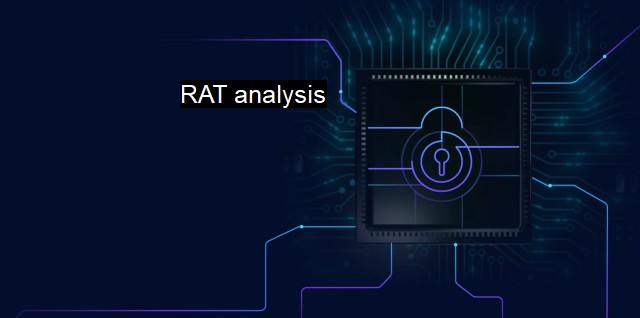What are RAT analysis?
Securing Digital Environments: The Importance of RAT Analysis in Cybersecurity Against Remote Administration Trojans
RAT analysis is a vital operational component and is fundamentally interconnected with antivirus functionality. Standing for Remote Access Trojan, RAT refers to a type of malware that allows a hacker to take control of a system remotely. This ability can be significantly damaging, as it potentially gives the hacker access to personal files, passwords, or even the entire structure of the network. Hence, RAT analysis is an integral aspect of maintaining a secure cyber environment.RATs are typically invisible to typical users, encapsulated in normal working software which operate as back doors for malicious activities when run. They can monitor user behavior through keyloggers, access confidential information, modify system settings, alter or delete files, use the victim's machine for malicious activities, and so on,working silently in the background without the user's knowledge.
RAT analysis stands for the methodology and approach used in identifying, assessing and combating this harmful software. The Threat Analysis method consists of all the necessary steps for identifying these threats, understanding their operation, assessing the potential damage, and devising strategies for their mitigation.
RAT analysis typically begins with the profiling of network traffic for any anomalies. Most RATs must communicate back to the attacker, leaving a trace within logs or network traffic. Detecting such communication is often the first step in threat analysis. Network analysts use software to identify these patterns that can indicate the presence of a RAT. They could be sudden increases in data traffic, the presence of unaccounted network connections, or even unexpected server requests. Such anomalies help analysts identify potential RAT infections.
Once a potential RAT infection is identified, the incident response team is activated to further investigate. This involves scrutinizing the affected files, analyzing the payload of the malware, and detecting what kind of data the RAT is programmed to collect. This information can help the team decipher the motives of the attacker, whether it's financial gain, corporate espionage, or personal damage, and devise the combating strategy accordingly.
At the same time, the cybersecurity team determines the vector of infection i.e., how the RAT entered the system. Was it through an email attachment, a drive-by download from a malicious website, or an infected physical device? Uncovering the method of infiltration is integral in preventing future occurrences.
The culmination of the RAT analysis process is implementing means to rid the infected system of the RAT and ensuring that future infections can be avoided. This typically involves use of antiviruses and other removal tools to purge the malware from the system then patching any software holes that the RAT exploited to gain access.
In an evolving landscape where such threats are increasingly complex and sophisticated, most organizations are embracing advanced technology solutions that use machine learning or artificial intelligence for RAT analysis. These systems are designed to learn from each interaction, enhancing their detection and mitigation capabilities with each successive threat.
As part of RAT analysis, Cybersecurity teams often educate the workforce about the nature of these threats and the precautions they should take. This can involve being wary about email attachments from unknown sources, keeping software and systems updated to the latest versions, or even just avoiding certain parts of the internet where RATs are well known to be common.
And post-incident, aspects like reviews and 'lessons-learned' are also an integral part of RAT analysis. After a RAT attack, experts ensure improvements are made by analyzing what went wrong, and how similar incidents can be avoided in the future.
RAT analysis is essentially a preventive and combative measure against harmful and hidden RATs. By careful and diligent examination of potentially infected systems, identifying the method of infiltration and implementing recovery plans, networks can be safeguarded from these malicious cyber threats and ensure safe and secure operation. It hence becomes heart of cybersecurity operations in an environment increasingly pressed with growing cyber threats.

| | A | | | B | | | C | | | D | | | E | | | F | | | G | | | H | | | I | | | J | | | K | | | L | | | M | |
| | N | | | O | | | P | | | Q | | | R | | | S | | | T | | | U | | | V | | | W | | | X | | | Y | | | Z | |
| | 1 | | | 2 | | | 3 | | | 4 | | | 7 | | | 8 | | |||||||